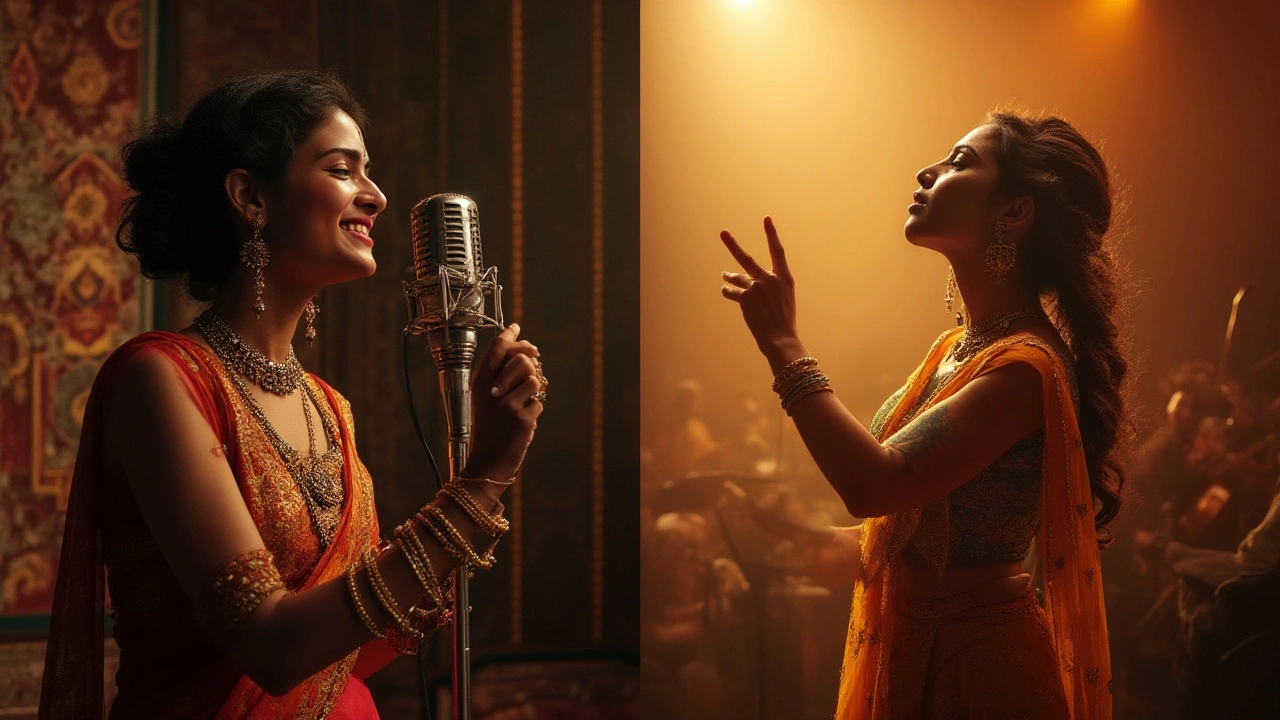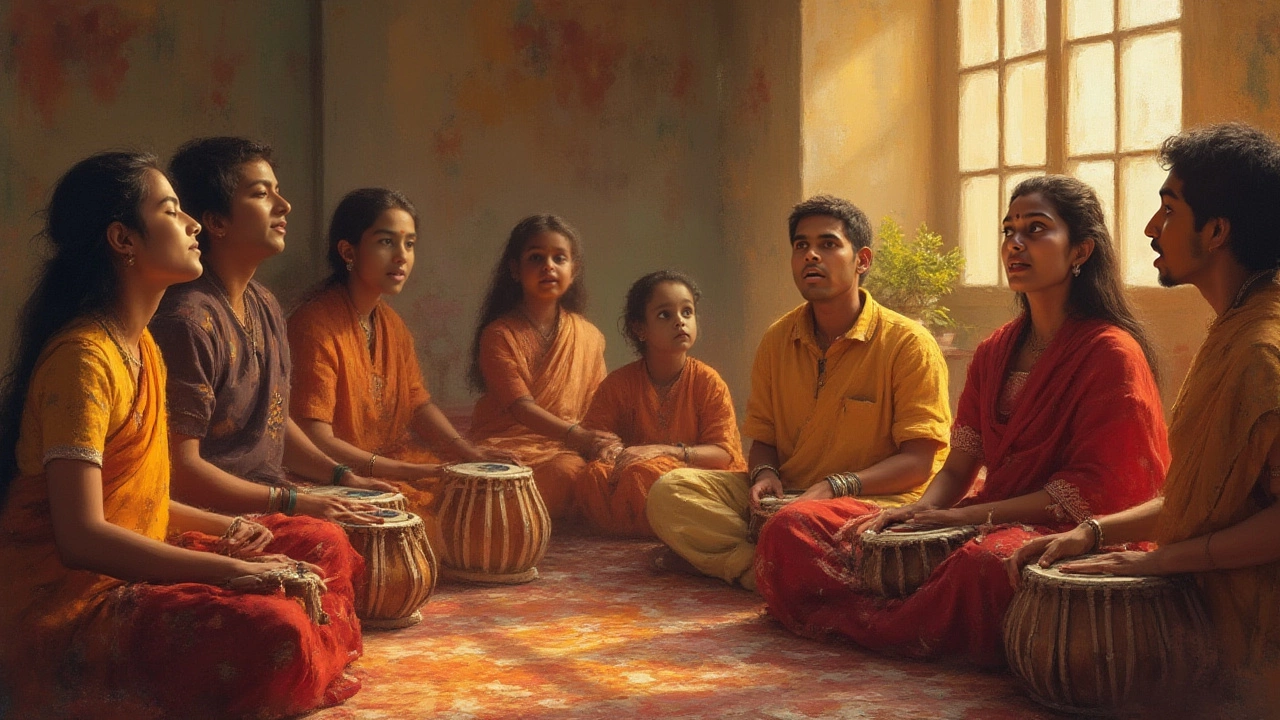Not too long ago, my son Kanishk belted out Arijit Singh’s high notes with giddy excitement. Of course, he didn’t land every pitch, and right in the middle, his voice slipped into falsetto. Instantly, I remembered the playground jibes from my own teenage years—"Are you singing or yelping?" A curveball, right? There’s this old-school belief, especially for guys, that “real men don’t sing in falsetto,” or worse, that it’s somehow cheating. But that’s where things get messy. Why do people treat falsetto with so much suspicion—for singers in India and all across the globe?
What Actually Is Falsetto?
Falsetto isn’t some mysterious musical superpower. It’s just a way to use your voice differently. Your regular speaking and singing voice—what we call "chest voice"—is produced by your vocal cords vibrating fully. But when you hit those higher notes that chest voice can’t reach, your vocal cords stretch thin, creating falsetto. It gives you that airy, light, sometimes almost flute-like sound. For men, it’s that sudden jump from your everyday voice into something that almost doesn’t sound like you.
Here’s the funny part: the term “falsetto” comes from the Italian “falso” meaning false, but it’s not fake—it’s just another legitimate part of vocal technique. Historically, classical music in the West made good use of falsetto. Ever heard of “castrati”? Boys were castrated to preserve their angelic high voices in church choirs. Before you clutch your pearls, don’t worry—this isn’t practiced anymore! Still, falsetto survived, showing up in European opera, gospel, Bollywood, and even folk Indian music.
Plenty of famous artists—think Kishore Kumar, Md. Rafi, The Weeknd, Justin Timberlake, Prince, and even A R Rahman—make falsetto a mainstay in their music. It’s not "wrong" or “unnatural.” It just sounds different. And every adult has that range hiding somewhere—they just might not have tried it yet. The stigma around falsetto comes more from cultural expectations and old gender stereotypes than anything musical.
Falsetto in Indian and Global Music
People might joke about falsetto, but the Indian music scene proves its worth. Kishore Kumar’s famous “Yeh Shaam Mastani” or Md. Rafi’s “Din Dhal Jaye” are striking because of those soaring, hypnotic notes. Bollywood especially uses falsetto for emotional depth and to bring a different flavor to duets, mystical moments, or even comic relief.
Semi-classical genres like thumri and folk traditions across India also have moments where the performer breaks into falsetto. Even classical singers sometimes drift into “head voice” (which overlaps with falsetto) for dramatic effect. Then there’s western pop: Michael Jackson owned falsetto in everything from “Don’t Stop ‘Til You Get Enough” to “Billie Jean.” Freddie Mercury used blistering falsetto on Queen anthems, making stadiums lose their minds. The Beatles’ “Because,” Bee Gees’ disco days, and even Billie Eilish’s whisper-sings owe plenty to this technique.
The list of male Indian playback singers who switch fluidly into falsetto is pretty long. And it’s not just for men. Female singers may not call it falsetto, but their transitions into head voice achieve a similar, magical effect. In Carnatic music, the connected high notes are sometimes called “tar saptak.” It’s just another color in the singer’s palette.
| Notable Falsetto Use in Songs (India & Worldwide) | Artist | Song |
|---|---|---|
| Bollywood Classic | Kishore Kumar | Yeh Shaam Mastani |
| Bollywood Romantic | Mohammed Rafi | Din Dhal Jaaye |
| Pop | Michael Jackson | Billie Jean |
| Disco | Bee Gees | Stayin' Alive |
| Indian Contemporary | Arijit Singh | Channa Mereya |
| Rock | Freddie Mercury | Somebody to Love |
| K-Pop | BTS | FAKE LOVE |
The audience doesn't analyze what’s chest, head, or falsetto—they just feel the song. In classical Indian styles, the smooth upward glide, the sudden high-pitched note—it all adds drama and depth. Instead of ignoring or shaming falsetto, Indian musicians quietly embraced it as just another tool. And fans ate it up.

Is It Wrong or “Cheating” to Sing in Falsetto?
So where did the negativity come from? It’s not about right or wrong, but about taste, tradition, and a bit of old-fashioned machismo. There’s this stubborn myth—especially in rock, folk, and even ghazal circles—that falsetto is a crutch for folks who can’t "sing properly." Some imagine the rich, robust lower register marks a "real" man’s voice, while falsetto is weak or even embarrassing.
But that’s just noise. Modern vocal coaches, scientists, and working musicians all agree—falsetto is a skill. It’s no easier than belting your chest voice. Getting smooth transitions between registers is seriously tough. Just ask someone struggling to cover an Arijit Singh or Bruno Mars track. Falsetto gives songs an emotional punch that you can’t always get with chest voice. It’s not cheating—it’s versatile musicianship.
In a 2021 voice science study published in the Journal of Voice, researchers found that professional male singers who could blend falsetto and mix voice had better pitch control and fewer vocal injuries than those who didn’t. Falsetto, used wisely, helps save your voice during marathon performances. If your favorite singer gets through three hours of live music and still nails those killer high notes late into the night, you can bet falsetto (or something like it) was part of their toolkit.
Still, not every song demands falsetto, and not all falsetto is equal. Some singers overdo it, making every song sound breathy or disconnected, which can turn off listeners. The trick is learning when to use it. If you treat falsetto as a tool—one option among many—it keeps your singing fresh, your voice healthy, and your audience guessing what’s coming next.
Tips for Using Falsetto Effectively
If you want to master falsetto or just understand it better, here are some road-tested tips:
- Warm up like you mean it: Falsetto can be fragile. Gentle lip trills, humming, and slides up and down your range work wonders. Think of it like stretching before a run.
- Don’t push: If you strain, you’re doing it wrong. Falsetto should sound easy—even if, at first, it feels weird.
- Record yourself: Your own recording will tell you more than any YouTube vocal analysis ever could. Listen for breaks, and work on smooth transitions.
- Try singing along to well-known falsetto tracks: Start with the higher Bee Gees songs or any Arijit Singh ballad and see how your voice reacts.
- Stay hydrated: Seriously, water helps you hit those floating high notes without cracking. Skip the ice-cold drinks—they tighten things up.
- Mix it up: Don’t live in falsetto land. Work on blending your chest, head, and falsetto registers for most power and flexibility.
- If you feel pain, stop right away: No jaw clenching, no strained necks. Singing should never hurt.
Here’s a trick my kid Kanishk loves—use falsetto as a kind of vocal “special effect" when a song gets dramatic. It makes live performances way more interesting. Every singer’s falsetto is unique. The goal isn’t perfection, it’s expression. Sometimes, falsetto is the only way to deliver a song’s emotion—think about heartbreak movie soundtracks or those thrilling high notes that make everyone sit up and pay attention.
So next time someone mocks falsetto or tries to put it down as “not real singing,” toss them a playlist of music legends who built careers on it. The *most important* thing is using your voice as creatively and healthily as possible. And if those high, floating notes make you—or your audience—feel something? That’s music doing what it’s meant to do.
